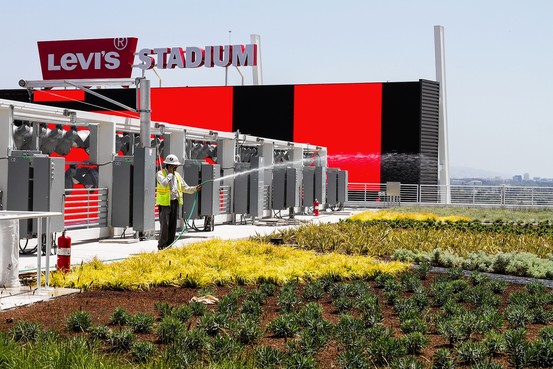On June 29th, 2015, the Green Sports Alliance will be coming to Chicago to host its annual summit on sustainability within the professional sports community. The Green Sports Alliance is a non-profit organization whose mission is to help sports teams, venues and leagues improve their environmental performance (1). The Alliance works with hundreds of teams and venues from around the world. Its qualification process has become one of the most recognizable and accredited in terms of sustainability certifications.
More information on the Green Sports Alliance can be found at their website or by visiting the About the Project tab.
The upcoming 2015 summit is a golden opportunity for Chicago to show the rest of the nation how sustainable the city truly is, and that the city upholds its status as a “city in a garden”. Unfortunately, however, none of the city’s teams or venues are members of the Alliance. This regrettable circumstance is certainly a detriment to the city’s environmentally friendly image. Luckily, the Sustainable Chicago Sports Project has recently been launched in order to highlight Chicago Sports’ green initiatives and to propel Chicago sports to the forefront of environmental performance.
Environmental friendliness has become a component of almost every current PR campaign. Everyone from gas companies, for example, BP, to insurance companies, such as Esurance, to candy companies, like Hershey’s, try to show consumers that they strive to be “green.” And why should professional sports be any different? Consumers are much more concerned with the implication of sustainable practices, therefore sports teams and venues should cater to this newfound concern just like any other corporation; and they are.
The importance of this new relationship between sports and sustainability is perhaps best seen in the recent construction of the San Francisco 49ers new stadium, Levi’s Stadium. The construction of a new stadium is always exciting. Like many large projects, stadium construction seems to be continual game of one-upmanship. Just one look at the Cowboys AT&T Stadium will prove this. Their massive “jumbo-tron” is the perfect embodiment of Jerry Jones-esque showmanship (2). Yet, the new stadium in San Francisco has taken an entirely different approach in gathering excitement; rather than highlighting itself as the biggest and baddest, Levi’s Stadium has emphasized its designation as the “greenest” stadium.
Levi’s certainly has the shiny new amenities that one would expect in a new high-end stadium, and advertises itself as one of the world’s best outdoor sports and entertainment venues. And with a 1.2 billion dollar price tag, it better be. But, all one has to do is visit the stadium’s website in order to see that sustainability was really at the center of Levi’s concerns. The very first section listed under the About tag is sustainability (3). They highlight the stadium’s “greenroof,” its use of reclaimed building products and water, the concession’s focus on local suppliers, and its easy accessibility via bike or public transit. All of these components have aided in the stadium being recognized as a LEED Gold Certified building (4).
LEED Certification guidelines and infrastructure requirements can be found at the LEED website.
What this new project has really done is show that it is possible to unite sports and sustainable practices. Professional sports spectators are just like other consumers; they want a high quality product that they can feel proud about. Sure, NFL fans want to look at the “jumbo-tron” and cheerleaders and fireworks when the team scores, but Levi’s has shown that the game can be much more. Levi’s has shown that there are alternate and better ways to grab the attention of spectators; the stadium has already created a bigger buzz than the Houston Texan’s new and outrageous jumbo-tron (5).
The stadium has changed the game; it stands as a symbol of the change in consumer preferences. Sports fans want all of the same excitement and fun that comes with going to a game, but would prefer it in an environmentally friendly way. Now, it is simply up to Chicago teams and venue to follow suit. By recognizing the importance of these sustainable practices and implanting the right initiatives, Chicago Sports should have no problems in gratifying the Green Sports Alliance.
(1) http://greensportsalliance.org/
(2) http://www.cbsnews.com/news/frank-talk-from-the-cowboys-jerry-jones/
(3) http://www.levisstadium.com/stadium-info/about-levis-stadium/
(6) http://online.wsj.com/articles/SB10001424052702304677904579537882691550494

